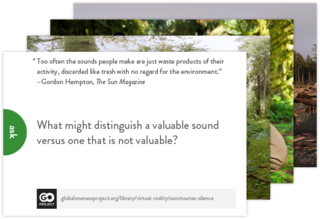The world is becoming increasingly loud with noise pollution. Fewer and fewer geographical areas remain free from the sounds of airplanes, cars, trains, and other modern human activities.
Recent research states that in the most protected areas within the United States— including national parks, wilderness areas, and open spaces— noise pollution is on the rise. A recent study by the National Park Service and Colorado State University shows that noise levels caused by human activity are twice as loud as natural sounds, such as wind, running water, animal noises. In 12 percent of U.S. wilderness areas, the most protected of public lands in the U.S, noise levels are twice as high, primarily due to human transportation sounds. This increase in noise, according to a study published in Science Magazine, goes beyond the levels that are currently known “to interfere with human visitor experience and disrupt wildlife behavior, fitness, and community composition.”
The impacts of noise are predictable, such as hearing loss and sleep disturbances, while other impacts can be surprising, such as an increase in blood pressure, cognitive delays, memory loss, and general heart health. The U.S. Environmental Protection Agency warns that noise can impact children during specific phases of development, hindering speech, language acquisition and language-related skills like reading and listening. Noise also impacts the non-human world. Sound is critical to animal communication and noise pollution can interfere with the capacity to hear and transmit important information, such as avoiding danger and locating prey. Some effects include the interruption of mating rituals and the relocation of birds and animals from noisy areas, which can have far-reaching impacts throughout the ecosystem.
In this virtual reality/360 film, Sanctuaries of Silence by Adam Loften and Emmanuel Vaughan-Lee, acoustic ecologist Gordon Hempton describes the impact, value, and power of silence on human beings. The film is set in the Hoh Rain Forest within Washington State’s Olympic National Park, one of the most ecologically diverse environments in the United States, as well as one of the quietest places in North America. The area is filled with the natural sounds of the temperate rainforest. The film provides an opportunity to experience the soundscape of the Hoh rainforest through Hempton’s perspective. He considers the impacts of noise pollution on humans and the natural world while sharing perceptions that illustrate the power of silence as a gateway to beauty and reflection in our noisy world.
